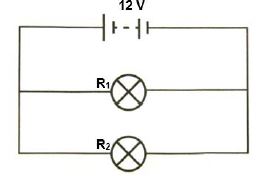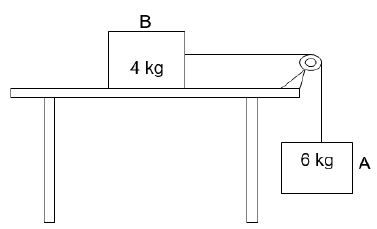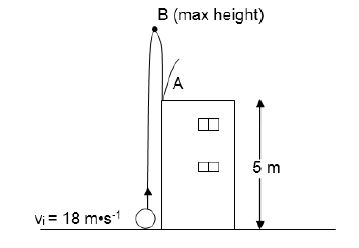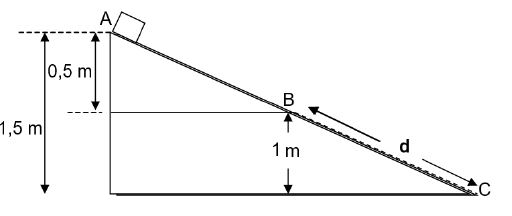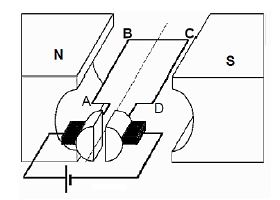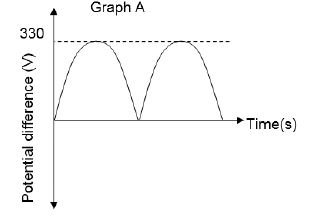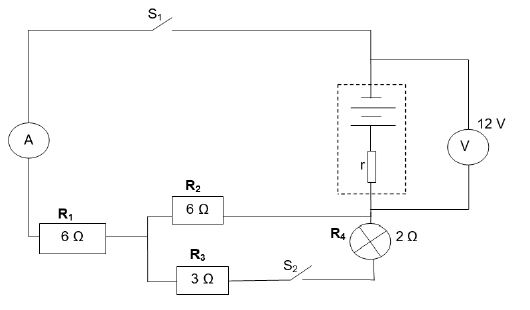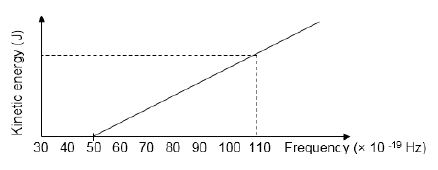PHYSICAL SCIENCE (PHYSICS) PAPER 1 GRADE 12 QUESTIONS - NSC PAST PAPERS AND MEMOS SEPTEMBER 2016
Share via Whatsapp Join our WhatsApp Group Join our Telegram GroupPHYSICAL SCIENCE (PHYSICS)
PAPER ONE (P1)
GRADE 12
NSC PAST PAPERS AND MEMOS
SEPTEMBER 2016
INSTRUCTIONS AND INFORMATION
- Write your NAME in the appropriate space on the ANSWER BOOK.
- Answer ALL the questions.
- Non-programmable calculators may be used.
- Appropriate mathematical instruments may be used.
- Number the questions correctly according to the numbering system used in this question paper.
- You are advised to use the attached DATA SHEETS.
- The formulae and substitutions must be shown in ALL calculations.
- Give brief motivations, discussions, etc. where required.
- Round off your final numerical answers to a minimum of TWO decimal places.
- Start EACH question on a NEW page.
- All diagrams are not necessarily drawn according to scale.
QUESTIONS
QUESTION 1: MULTIPLE-CHOICE QUESTIONS
Four possible options are provided as answers to the following questions. Each question has only ONE correct answer. Choose the best answer and write down A, B, C or D next to the question number (1.1–1.10) on your ANSWER BOOK.
1.1 A boy throws a tennis ball vertically upwards from the ground. At its maximum height above the ground, its acceleration is …
- upwards.
- equal to the velocity at that point.
- downwards.
- zero. (2)
1.2 A CONSTANT FORCE F is applied to a box, causing the box to move at a CONSTANT VELOCITY over a rough horizontal surface. ![]()
The free-body diagram below shows all forces acting on the box. THE DIAGRAM IS NOT DRAWN TO SCALE. 
Which ONE of the following relationships is correct?
- F < f
- F > f
- F = w
- F = f (2)
1.3 An airbag can protect a driver from serious injury during a collision. Which ONE of the following best explains why this is possible? (2)
TIME OF IMPACT | NET FORCE | |
A | Increases | Increases |
B | Decreases | Decreases |
C | Increases | Decreases |
D | Remains the same | Decreases |
1.4 The graph below shows the relationship between maximum kinetic energy (Kmax) of the photoelectrons and frequency of incident photons during an experiment on the photoelectric effect.
The point labeled P on the graph represents the … of a photon.
- maximum velocity
- maximum frequency
- work function
- threshold frequency (2)
1.5 An observer runs towards a stationary sound source. As the observer approaches the source, its pitch appears to increase because the …
- loudness of the source appears to increase.
- frequency of the source appears to increase.
- frequency of the source appears to decrease.
- wavelength of the source appears to increase. (2)
1.6 Two light bulbs are connected across a battery of emf ԑ and negligible internal resistance as shown in the diagram below.
The battery delivers maximum voltage. If the power of R1 is greater than the power of R2, which statement is CORRECT?
- The resistance of R1 is greater than the resistance of R2.
- The resistance of R2 is greater than the resistance of R1.
- The resistance of R1 is equal to the resistance of R2.
- The resistance of R1 is equal to 0 Ω. (2)
1.7 A line emission spectrum is produced when an electron in an excited atom makes a transition from …
- higher to lower energy levels and emit light energy.
- higher to lower energy levels and absorb light energy.
- lower to higher energy levels and emit light energy.
- lower to higher energy levels and absorb light energy. (2)
1.8 The sketch represents an alternating current (AC) generator that is rotated clockwise as shown below. 
The direction of the induced current in the coil is from …
- B to A.
- C to B.
- A to B.
- D to C. (2)
1.9 Two small, identical positively charged spheres P and Q on insulated stands are placed a distance d apart as shown below. The magnitude of the force exerted by Q on P is F. 
If the distance is now changed to ½ d, the new force between the spheres is …
- ¼ F.
- ½ F.
- 2 F.
- 4 F. (2)
1.10 The photoelectric effect is evidence of the fact that …
- metals contain electrons.
- light has a particle nature.
- light has a wave nature.
- metals have a positive charge. (2)
[20]
QUESTION 2 (Start on a NEW page.)
A 4 kg block B, resting on a flat, rough horizontal table, is connected by a light inextensible string to a 6 kg block A. The string is passed over a light frictionless pulley in such a way that block A hangs vertically downwards as shown in the diagram below.
2.1 Write down Newton’s Second Law of motion in words. (2)
2.2 Draw a free-body diagram of all forces acting on block B. (4)
2.3 The kinetic frictional force experienced by block B is 32,53 N to the left. Calculate the magnitude of the acceleration. (6)
2.4 Calculate the coefficient of kinetic friction between the surface of the table and block B. (3)
2.5 How will the frictional force on the block be affected if the 4 kg block is pulled at an angle of 30° to the horizontal?
Write down INCREASE; DECREASE or REMAIN THE SAME.
Explain your answer. (3)
[18]
QUESTION 3 (Start on a NEW page.)
A ball is projected vertically upwards from the ground with a speed of 18 m•s-1. It passes the roof of a 5 m tall building on its way up and reaches its maximum height at B. On its way down, the ball strikes the roof of the building at point A as shown in the diagram below. Ignore the effects of air friction.
3.1 Write down the magnitude of the velocity of the ball at point B the maximum height above the ground. (1)
3.2 Write down the magnitude and direction of the acceleration of the ball at point B. (2)
3.3 Calculate the following regarding the ball:
3.3.1 The time it takes to reach point B above the ground (3)
3.3.2 The velocity at the instant it strikes the roof at point A (3)
3.3.3 The total time it takes, from the instant it is projected to the time it strikes the roof at point A (4)
3.4 Sketch the velocity-time graph for the motion of the ball from the ground up until it hits the roof of the building.
Indicate the following on your graph:
- initial velocity
- time at point B (the maximum height)
- final velocity (4)
[17]
QUESTION 4 (Start on a NEW page.)
A box is held stationary at point A, the top of a plane ABC, inclined at an angle to the horizontal. The portion AB of the plane is smooth while the portion BC is rough.
4.1 State the principle of conservation of mechanical energy in words. (2)
4.2 Calculate the speed of the box at position B. (4)
4.3 The box experiences a kinetic frictional force of 14,7 N as it moves with a constant velocity, from B to C, down the plane.
4.3.1 State the Work-Energy Theorem in words. (2)
4.3.2 Draw a free-body diagram showing ALL forces acting on the box at B. (3)
4.3.3 Use the work-energy principle to calculate the distance d, between B and C if the box has a mass of 3 kg. (5)
4.4 The angle between the incline and the horizontal is decreased.
How will this decrease affect the coefficient of kinetic friction acting on the box?
Write only INCREASE; DECREASE or REMAIN THE SAME. (1)
[17]
QUESTION 5 (Start on a NEW page.)
A man and a woman each wearing roller skates, stand facing each other on a flat frictionless horizontal surface. The man pushes the woman and the woman moves to the right at 4 m•s-1.
5.1 State the principle of conservation of linear momentum in words. (2)
5.2 The masses of the man and the woman are 80 kg and 50 kg respectively. How does the impulse on the woman compare to that on the man?
Write only GREATER THAN, SMALLER THAN or EQUAL TO. (1)
5.3 Calculate the man’s velocity immediately after pushing the woman away from him. (4)
5.4 Calculate the impulse on the woman. (3)
[10]
QUESTION 6 (Start on a NEW page.)
A police car is moving down along on a flat road at a constant speed and emits from its siren sound waves with a frequency 346 Hz. A woman sitting next to the road detects sound waves at a frequency that is 50 Hz more than the frequency of sound waves emitted by the siren as the police car is moving towards her.
6.1 State the Doppler effect in words. (2)
6.2 Explain, in terms of wave motion, why the frequency heard by the woman is higher than the frequency of the source. (2)
Assume that the speed of sound in air is 340 m•s-1.
6.3 Calculate the speed of the car. (5)
6.4 State ONE application of the Doppler effect in medicine. (1)
6.5 A line in a hydrogen spectrum has a frequency of 7,55 × 1014 Hz when measured in a laboratory. The same line in the spectrum of a distant star has a frequency of 17,23 × 1011 Hz.
State whether the distant star is moving TOWARDS or AWAY from the earth. Give a reason for the answer. (2)
[12]
QUESTION 7 (Start on a NEW page.)
Two metal spheres, M and N, on insulated stands carry charges +QM and -6 nC respectively. The distance between the two charges is 20 mm and P is a point at 10 mm from sphere N as shown below. The NET ELECTRIC FIELD at point P due to presence of M and N is 5,2 × 105 N∙C-1 westwards.
7.1 Define the term ELECTRIC FIELD at a point. (2)
7.2 Calculate the magnitude of charge QM on sphere M. (7)
7.3 The two spheres were allowed to make contact and moved back to their original positions.
7.3.1 Draw the electric field pattern due to the two charges. (3)
7.3.2 Calculate the …
- number of electrons transferred from one sphere to another sphere after separation. (4)
- magnitude and the direction of the force that sphere M exerts on sphere N after contact. (3)
[19]
QUESTION 8 (Start on a NEW page.)
The simplified sketch below represents an electrical motor.
8.1 Name the type of electrical motor that is shown above. (1)
8.2 What energy conversion takes place in the above electrical motor? (2)
8.3 The turning effect of the electrical motor can be increased by increasing the number of turns of coil or by increasing the strength of the magnetic field.
8.3.1 Write down another way in which this turning effect can be increased. (1)
It is intended to produce a maximum potential difference in the electrical motor when a constant current is supplied.
8.3.2 In which position should the coil relative to the magnetic field be positioned in order to produce maximum potential difference?
Write only PARALLEL or PERPENDICULAR. (1)
8.4 The graphs below shows the output of a generator.
8.4.1 Is the reading indicated as 330 V on the graph above a root mean square voltage (Vrms) or a maximum voltage (Vmax)? (1)
8.4.2 The generator produces the root mean square current (Irms) of 12 A. Determine the rate at which the generator will transfer energy. (4)
[10]
QUESTION 9 (Start on a NEW page.)
In the circuit below, the battery has an emf of 12 V and internal resistance r. The three resistors and the bulb are connected as shown in the diagram. The resistance of the bulb is 2 Ω. Initially both switches S1 and S2 are open. Assume that all the connecting wires and an ammeter A have negligible resistances.
9.1 With only switch S1 closed, the reading on the voltmeter drops to 10,8 V. Calculate the …
9.1.1 reading on ammeter A. (4)
9.1.2 internal resistance, r of the battery. (3)
9.2 With both switches, S1 and S2, closed, the ammeter reads 1,5 A.
9.2.1 Calculate the power dissipated by the bulb. (7)
9.2.2 What effect will the closing of both switches have on the “lost volts”? Write only INCREASE, REMAINS THE SAME OR DECREASE.
Fully explain your answer. (3)
[17]
QUESTION 10 (Start on a NEW page.)
Different frequencies of light are shone onto the surface of a metal. The graph below shows the relationship between the kinetic energy of photo-electrons and frequency of the incident light.
10.1 Refer to the graph and write down the threshold frequency of the metal. (1)
10.2 Give a reason why no photo-electrons are released when light of frequency 45 × 10-19 Hz is used. (2)
10.3 Calculate the velocity of the ejected electrons when a light with a frequency of 110 × 10-19 Hz is shone onto the metal. (5)
10.4 What effect will an increase in the intensity of radiation have on the velocity of ejected electrons?
Write only INCREASE, DECREASE or STAYS THE SAME.
Explain your answer. (2)
[10]
TOTAL: 150
DATA FOR PHYSICAL SCIENCES GRADE 12
PAPER 1 (PHYSICS)
TABLE 1: PHYSICAL CONSTANTS
NAME | SYMBOL | VALUE |
Acceleration due to gravity | g | 9,8 m•s-2 |
Universal gravitational constant | G | 6,67 × 10-11 N•m2•kg-2 |
Speed of light in a vacuum | c | 3,0 × 108 m•s-1 |
Planck's constant | h | 6,63 × 10-34 J•s |
Coulomb's constant | k | 9,0 × 109 N•m2•C-2 |
Charge on electron | e | -1,6 × 10-19 C |
Electron mass | me | 9,11 × 10-31 kg |
Mass of earth | M | 5,98 × 1024 kg |
Radius of earth | RE | 6,38 × 103 km |
TABLE 2: FORMULAE
MOTION
| vf = vi + aΔt | Δx = ViΔt + ½aΔt2 or Δy = ViΔt2 + ½aΔt2 |
Vf2 = Vi2 + 2aΔx or Vf2 = vi2 + 2aΔy | Δx = [Vi + Vf]Δt or Δy = [Vi + Vf]Δt |
FORCE
Fnet = ma | p= mv |
fsmax = µsN | fk = µkN |
FnetΔt = Δp | w =mg |
F = Gm1m2 | g = G M |
WORK, ENERGY AND POWER
W =FΔxcosθ | U= mgh or EP = mgh |
K = ½mv2 or Ek = ½mv2 | Wnet = ΔK or Wnet = ΔEk ΔK = Kf −Ki or ΔEk =Ekf − Eki |
Wnc= ΔK + ΔU or Wnc= ΔEk + ΔEp | P = W Δt |
Pav = Fv |
WAVES, SOUND AND LIGHT
v = f λ | T =1/f |
fl = v ± vl fs fl = v ± vl fb | E = hf or E = h c |
E = W0 + Ek where | |
ELECTROSTATICS
| F = kQ1Q2 r2 | E = KQ |
E = V | E = F |
V = W | n = Q |
ELECTRIC CIRCUITS
R = V | emf (ε) = I(R + r) |
RS = R1 + R2 + ....... | q = I Δt |
W = Vq | P= W |
ALTERNATING CURRENT
I rms = Imax | Paverage = VrmsIrms |

